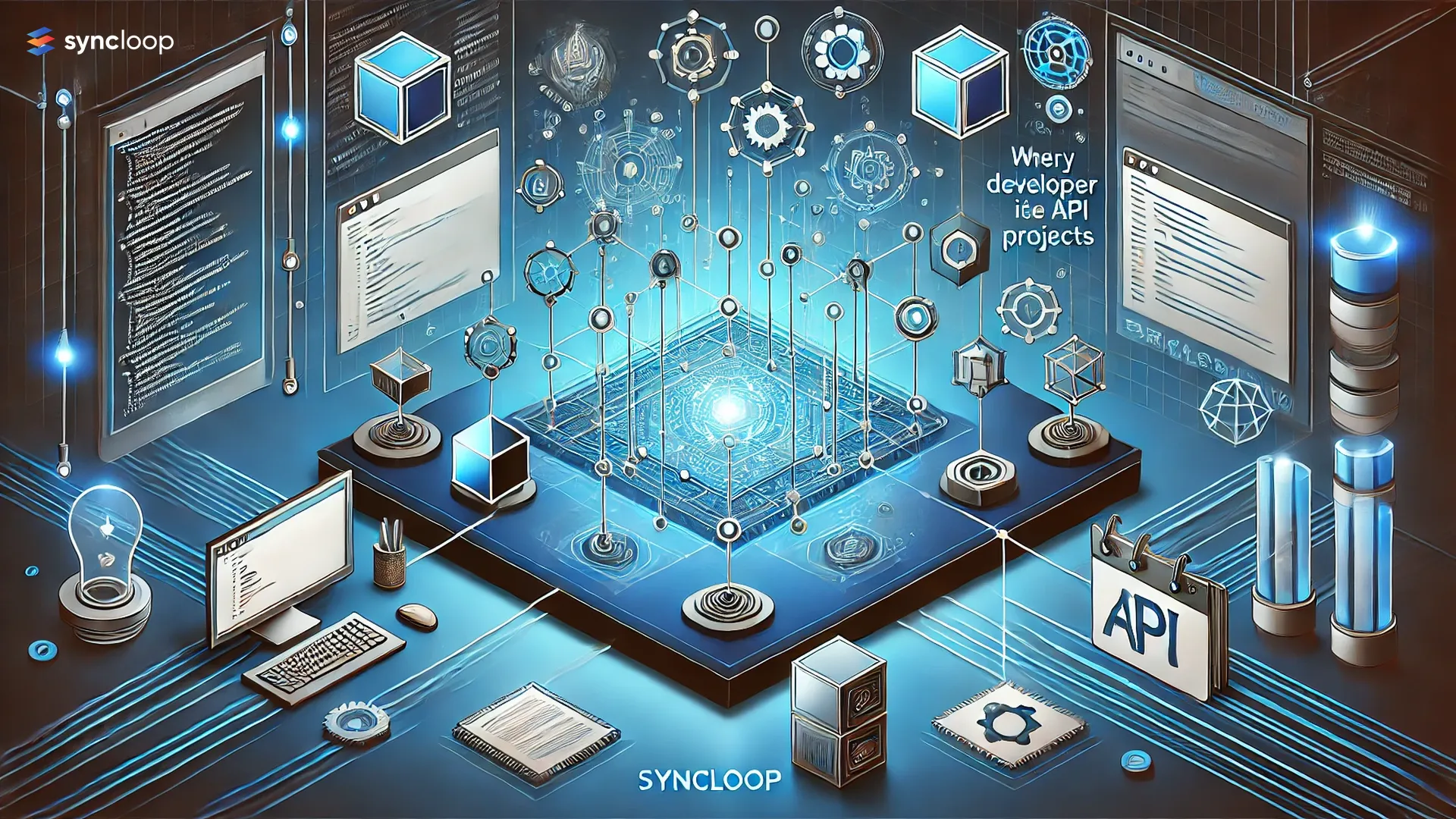Why Every Developer Should Use Syncloop for API Projects

The Challenges of API Development
API development is crucial but often riddled with challenges:
- Complexity in design: Ensuring APIs are intuitive and well-documented.
- Security risks: Safeguarding APIs from threats like unauthorized access and data breaches.
- Testing woes: Comprehensive testing can be time-consuming and resource-intensive.
- Scalability issues: APIs need to handle increasing traffic seamlessly.
- Integration difficulties: Ensuring smooth interoperability with other systems.
Syncloop addresses these hurdles, empowering developers to focus on innovation rather than operational bottlenecks.
Why Syncloop is a Game-Changer
- Comprehensive Tools Under One Roof Syncloop offers end-to-end API lifecycle management, including design, testing, deployment, and monitoring. By consolidating these tools, it eliminates the need for multiple platforms, saving time and effort.
- User-Friendly Interface The intuitive drag-and-drop interface simplifies API design, making it accessible even to developers with minimal experience in API architecture.
- Advanced Control Structures With built-in features like Transformers, Ifelse, Redo, and Await, Syncloop allows intricate customization of workflows without writing extensive code.
- Seamless Integrations Syncloop ensures smooth integration with third-party tools, databases, and services, reducing the complexity of building interconnected systems.
- Robust Security Syncloop incorporates OAuth, API key management, and detailed access control to ensure robust security, making APIs resilient against threats.
- Scalability Whether you're building for a small application or a large enterprise, Syncloop scales effortlessly, handling increasing traffic without compromising performance.
- Automated Testing Its built-in testing suite helps developers run functional, load, and security tests with minimal manual intervention, ensuring APIs are production-ready.
- Cost-Efficiency By offering a single platform with diverse functionalities, Syncloop reduces the need for separate tools, leading to significant cost savings.
How Syncloop Simplifies the API Development Lifecycle
- Planning and Design
- Syncloop’s design canvas lets developers outline their API structure visually.
- Built-in templates accelerate the creation of common API endpoints.
- Implementation
- Syncloop supports a wide array of data formats like JSON, XML, and YAML.
- Its modular structure allows developers to create reusable components, saving time on repetitive tasks.
- Testing
- Automated testing tools ensure APIs meet functional and performance benchmarks.
- Mock servers simulate API behavior for faster development and debugging.
- Deployment
- Syncloop offers multiple deployment options, including cloud and on-premises setups, making it adaptable to diverse infrastructure needs.
- Monitoring and Optimization
- Real-time analytics provide insights into API performance.
- Error tracking helps identify and resolve issues promptly.
Real-World Use Cases
- Startups: Quick prototyping and testing for minimal viable products.
- Enterprises: Managing complex API ecosystems with ease.
- E-commerce: Seamless integration of payment gateways, inventory systems, and customer databases.
- Healthcare: Ensuring secure data exchange between healthcare applications and devices.
Developer Testimonials
“Syncloop has transformed the way we build APIs. Its intuitive interface and robust tools save us countless hours.” – Sarah K., Full-stack Developer “The built-in testing and monitoring features are a lifesaver. I can confidently deploy APIs without worrying about downtime.” – Ahmed R., Backend Engineer
Conclusion
Syncloop is not just a platform—it’s a paradigm shift in API development. Its comprehensive features, user-friendly interface, and robust security make it an indispensable tool for developers. Whether you’re a novice or a seasoned professional, Syncloop empowers you to build, test, and deploy APIs with unparalleled ease.
Image Suggestion
A futuristic workspace with a developer creating APIs on a streamlined dashboard, showcasing interconnected systems and a secure cloud environment.
Back to Blogs